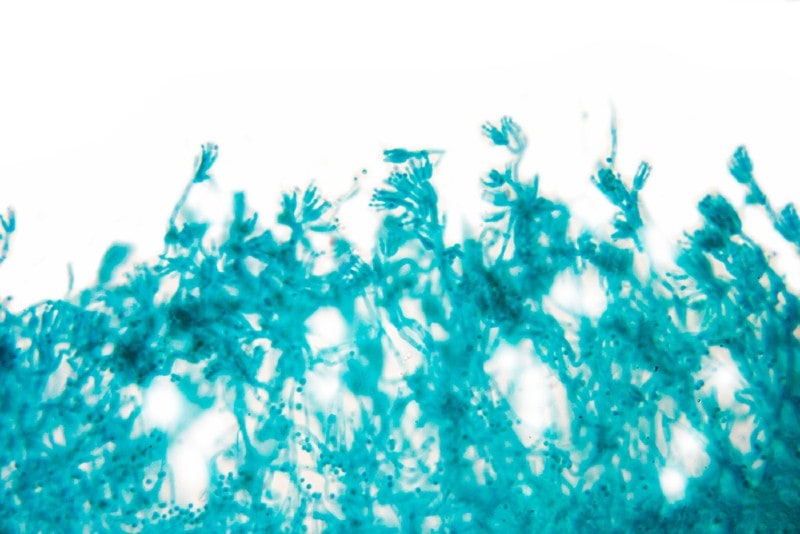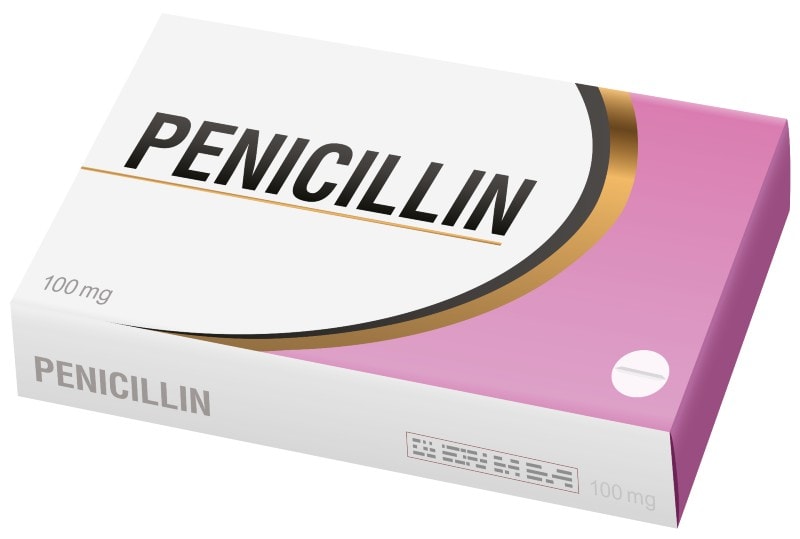What Does Penicillin Look Like Under a Microscope? (With Pictures)
Last Updated on

Penicillin is considered the original antibiotic, and scientists created it using different kinds of mold. Many people wonder what it looks like under a microscope. Keep reading as we dive in and look at scientific studies to see if we can find the answer and uncover other interesting facts about this life-saving medication.

What Is Penicillin?
Penicillin is a group of antibiotics that scientists created using mold. The two main kinds of mold in penicillin are penicillium chrysogenum, and penicillium rubens.

What Does Penicillin Look Like Under a Microscope?
One of the most notable features of penicillium mold when looking at it under a microscope is its branching nature. The branching enables the thin-walled cells to dig deeper into the substrate, where they can absorb more nutrients. In addition, many branches will have a cluster of phialides at the tip that stores food in the form of oil globules.
When Did Scientists Discover Penicillin?
A French microbiologist was the first to describe penicillium rubens in 1923, and its medicinal importance was discovered a few years later in 1928 at a London hospital. A researcher found that one of his bacterial cultures had mold contamination and that the mold inhibited bacterial growth. Scientists were able to create a purified compound in 1940 that they used to treat a patient suffering from meningitis in 1942, and they won a Nobel prize in 1945.
How Do Scientists Create Penicillin?
Scientists grow penicillium mold in a fermenter for faster and more controlled growth. It grows in a liquid solution of sugar, nutrients, and nitrogen. Once the mold grows and uses most of the sugar and nutrients, it will begin to produce penicillin that scientists can harvest.
How Can I View Penicillium Molds With Microscope?
A careful search of your refrigerator will likely turn up at least one piece of food with mold on it.
Carefully scrape some mold onto the microscope slide, and add freshly prepared hematoxylin. Allow it to soak right into the specimen for a better image. Use a magnification setting of 40 to 1,000 times to get a good view of the microscopic mold.
The mold samples will look like thin stalks or plants at a low magnification of 40x. Increasing the magnification to 100x makes them look like squashed flowers.
At higher magnifications of 400x and so on, you will be able to see the individual spherical structures known as conidia, which are the spores that the mold uses to reproduce asexually.
Other Interesting Facts About Penicillin
- Doctors use penicillin to treat tonsillitis, pneumonia, meningitis, and other diseases.
- Many strains of bacteria can become resistant to the effects of penicillin, forcing chemists to keep changing the formula.
- Penicillin took nearly 20 years to stabilize and perfect.
- Chemists also use penicillium molds to make cheese and organic acid.

Final Thoughts
The penicillium molds that scientists use to create the antibiotic penicillin resemble thin stalks under a microscope, similar to a tree or small plant with many branches. It has cone-shaped structures at the end to hold nutrients, and it frequently branches to dig into the substrate to collect nutrients. It’s a popular mold that you can find in almost every home and is also common in soil.
Featured Image Credit: Arkadiusz Wos, Shutterstock
About the Author Ed Malaker
Ed Malaker is a veteran writer who contributes to a wide range of blogs covering information on computer programming, pets, birding, tools, fitness, guitars, and optics. Outside of writing, Ed is often found working in the garden or performing DIY projects in the house. Ed is also a musician, spending his time composing music for independent films or helping people repair their guitars.
Related Articles:
Monocular vs Telescope: Differences Explained (With Pictures)
How to Clean a Refractor Telescope: Step-by-Step Guide
How to Clean a Telescope Eyepiece: Step-by-Step Guide
How to Clean a Rifle Scope: 8 Expert Tips
What Is a Monocular Used For? 8 Common Functions
How to Clean a Telescope Mirror: 8 Expert Tips
Brightfield vs Phase Contrast Microscopy: The Differences Explained
SkyCamHD Drone Review: Pros, Cons, FAQ, & Verdict
